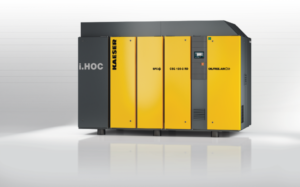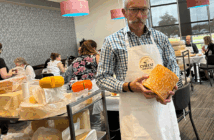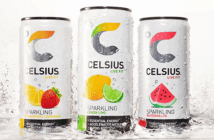
Reliable and efficient compressed air treatment is essential in meeting the stringent air quality standards required in the manufacture of food and beverages. Kaeser Compressors discusses how its latest range of dry-running rotary screw compressors featuring the patented iHOC rotating dryer – not only provide a dependable source of quality compressed air with pressure dew points as low as -30C – but does so energy efficiently and all from within a space-saving design.
There are some demanding applications in the food and beverage industry that require extremely dry compressed air. Generally speaking, the drier the air needs to be, the lower the pressure dew point required and, the lower the pressure dew point, the higher the level of complexity, space requirement, and cost involved. But, for those applications needing to attain extremely dry compressed air to a negative pressure dewpoint of around -30C, Kaeser Compressors presents an integrated and intelligent solution that is energy-efficient and space-saving.
Integrated Heat of compression (iHOC) dryers
Where extremely dry and clean compressed air is required, Kaeser’s dry-running rotary screw compressors featuring an “integrated heat of compression dryer” (iHOC dryer) may be just the solution.
Here, the dryer is integrated within the dry-running compressor. In this dryer design, the desiccant is contained in a drum through which the compressed air flows in an axial direction. Desiccant regeneration and compressed air-drying take place continuously, within a single pressure receiver. The drying and regeneration sectors are separated, however, both structurally and in terms of process. Slight pressurisation of the drying sector ensures that once dried, the compressed air does not reabsorb moisture from the regeneration air flowing by, in the adjacent sector.
Drying without additional energy consumption
In iHOC dryers, desiccant regeneration takes place continuously, using the heat that already exists in the hot compressed air. Following the final air compression stage in the compressor, the hot compressed air is not sent to the compressor’s second stage coolers and lost, but it is diverted directly to the drying sector of the integrated rotating dryer before it exits the compressor. The heat arising as a result of compression of the air is therefore also used for desiccant regeneration. This heat is freely available without cost, as no additional energy is required for the drying process.
Reliable pressure dew point
Moden iHOC units also guarantee reliable and stable maintenance of low-pressure dew points to -20C, and under special conditions even to -40C.
In integrated rotation dryers, the attainable pressure dew point is determined by the compressed air inlet temperature in the drying sector and the available regeneration potential, which depends on the mass flow of regeneration air and its temperature. The iHOC dryer, therefore, uses the entire mass flow of hot compressed air available at the end of the second compression stage for regeneration purposes. This is why it is referred to as a “full stream” rotation dryer.
Intelligent regeneration management
The attainable pressure dew point will fluctuate with the temperature of the ambient air (insofar as it acts as a cooling medium) – and this effect is especially pronounced in air-cooled compressors with integrated rotation dryers. For instance, if temperatures temporarily peak around 40C in the inlet area during summer months, it may be necessary to enhance the rotation dryer’s regeneration potential during this time, to avoid exceeding a required pressure dew point of -20C.
Here the discharge temperature of the iHOC full-stream rotation dryer following the second stage (i.e., the regeneration air temperature) can be increased by a controlled bypass around the first compression stage cooler. The regeneration air temperature (and consequently, the regeneration potential) increases to ensure maintenance of the target pressure dew point. Using the bypass to increase the regeneration air temperature to meet process requirements makes sense – especially as the conventional technology available on the market for electrically heating the regeneration air consumes significantly more energy.
For more information visit nz.kaeser.com or phone 0800 447 820.




























































































